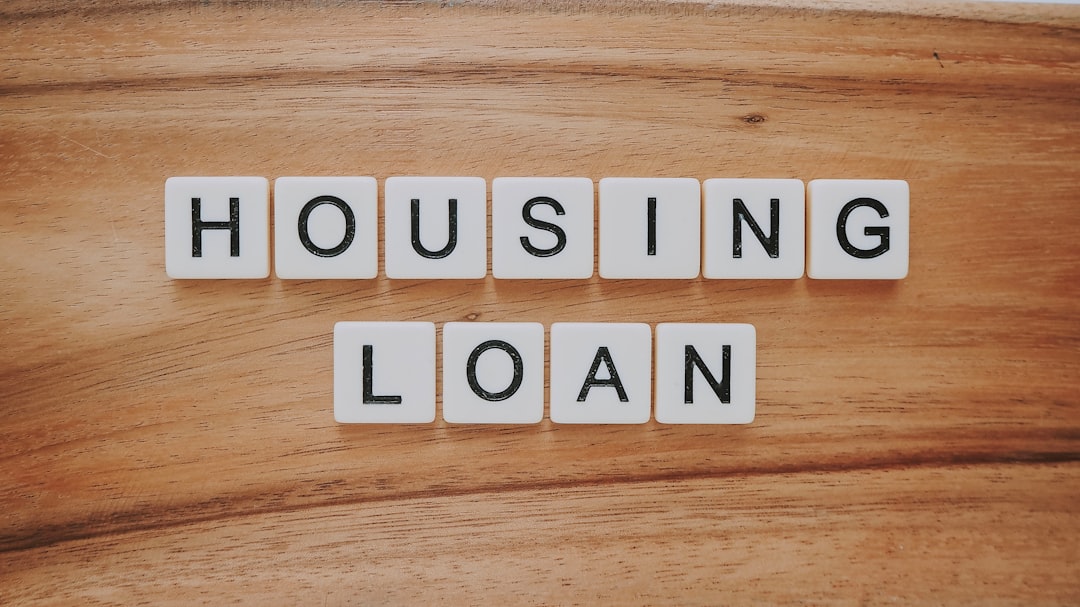Refinancing a mortgage into a Home Equity Line of Credit (HELOC) is an option that many homeowners overlook when considering their financial strategies. While traditional mortgage refinancing is a popular choice, shifting to a HELOC could provide flexibility, lower interest rates, and the potential for easier debt management.
This article will guide you through the process of refinancing your mortgage into a HELOC, helping you understand how it works, who qualifies, and the best practices for using your new credit line responsibly.
Understanding Mortgage Refinancing and HELOCs
In today’s economic climate, homeowners are always looking for ways to maximize their financial resources, manage debt, and access home equity. While the idea of refinancing may seem straightforward, many people overlook HELOCs as a valuable financial tool.
A HELOC is a type of second mortgage that allows you to borrow against the equity in your home. Unlike traditional fixed-rate loans, a HELOC works like a revolving line of credit, offering more flexibility when it comes to borrowing and repayment. Refinancing your mortgage into a HELOC can be a smart strategy for homeowners looking for financial flexibility and ways to save on interest or manage debt more efficiently.
Before diving into the specifics, consider how paying off your mortgage in five years or less could change your financial future. Learn how to eliminate years of interest payments with this simple 5-day challenge that has helped thousands achieve financial freedom.
What is a HELOC and How Does it Work?
Understanding the Basics of HELOC
A Home Equity Line of Credit (HELOC) is a loan that allows you to borrow against the equity in your home. The amount you can borrow depends on the value of your home, your current mortgage balance, and the equity you’ve built up over time.
Unlike a traditional mortgage, a HELOC provides you with a line of credit that you can borrow from as needed. You only pay interest on the amount you borrow, and your payments can vary based on how much you’ve drawn from the credit line.
Key Features of HELOCs:
- Revolving Credit: Much like a credit card, a HELOC lets you borrow and repay money multiple times.
- Interest Rates: HELOCs often come with adjustable interest rates, which may start lower than fixed-rate mortgages but can fluctuate based on market conditions.
- Repayment Terms: During the draw period, typically 5-10 years, you may only be required to make interest payments, but principal repayment will begin once the draw period ends.
HELOC vs. Traditional Mortgages:
A HELOC differs from a traditional mortgage in several key ways:
- Flexible Borrowing: With a mortgage, you receive a lump sum loan amount and pay it off over time. A HELOC, however, gives you the option to borrow as much or as little as needed, up to your credit limit.
- Interest Rates: Mortgage rates are generally fixed, while HELOC interest rates are variable.
- Payment Terms: Mortgages have a fixed repayment schedule, while HELOC payments can be more flexible depending on your borrowing habits.
By understanding these key differences, you’ll be better prepared to evaluate whether refinancing your mortgage into a HELOC is a good fit for your financial goals.
Why Should You Consider Refinancing Your Mortgage into a HELOC?

Flexibility and Financial Freedom
One of the biggest advantages of refinancing your mortgage into a HELOC is the flexibility it offers. With a HELOC, you only borrow what you need and pay interest only on that amount. Whether you want to pay off high-interest debt, fund home improvements, or simply access cash for emergencies, a HELOC gives you the freedom to manage your finances the way you see fit.
Lower Monthly Payments
If you’re looking to lower your monthly payments, a HELOC can provide a solution. During the draw period, you might only need to pay the interest, which can significantly reduce your payment amounts. This is especially useful if you’re struggling with high mortgage payments and need temporary relief.
Access to Home Equity
Refinancing into a HELOC allows you to tap into the equity that has built up in your home over time. As long as you have sufficient equity, you can access funds for various purposes, such as home repairs, debt consolidation, or investing in other opportunities.
Consolidating Debt
Many homeowners choose to refinance their mortgage into a HELOC to consolidate high-interest debt such as credit cards or personal loans. Since HELOCs often have lower interest rates than credit cards, you could save money on interest payments while simplifying your debt repayment strategy.
However, it’s important to note that refinancing into a HELOC isn’t always the right choice for everyone. While it offers flexibility, it also carries some risks, which we’ll explore in more detail later.
Want a smarter way to eliminate mortgage debt while increasing cash flow? Join the 5-day challenge here to create your own 5-year mortgage payoff plan.
Eligibility Criteria: Who Can Refinance a Mortgage into a HELOC?
Before applying for a HELOC, you’ll need to determine whether you meet the eligibility criteria. Here are some of the key factors that lenders consider:
Credit Score and Debt-to-Income Ratio
Lenders typically require a credit score of at least 620 to qualify for a HELOC, but a higher score will improve your chances of securing a favorable interest rate. Additionally, your debt-to-income (DTI) ratio plays a critical role in the approval process. A lower DTI indicates that you have enough income to comfortably manage additional debt.
Home Equity
The amount of home equity you’ve built up is one of the most important factors in securing a HELOC. Lenders typically allow you to borrow up to 85% of your home’s equity. For example, if your home is valued at $300,000 and you owe $150,000 on your mortgage, you could potentially borrow up to $150,000 from a HELOC, depending on the lender’s terms.
Loan-to-Value (LTV) Ratio
Your loan-to-value (LTV) ratio is calculated by dividing your existing mortgage balance by the appraised value of your home. Lenders use this ratio to determine how much equity you have in your home. The lower the LTV ratio, the more equity you have, which can increase your chances of qualifying for a HELOC.
Step-by-Step Guide: How to Refinance Your Mortgage into a HELOC
Refinancing into a HELOC may sound complicated, but with the right preparation, you can navigate the process with ease. Here’s a step-by-step guide to help you get started.
1. Evaluate Your Current Mortgage Situation
The first step in refinancing into a HELOC is to evaluate your current mortgage situation. Understand your current interest rate, monthly payments, and remaining balance. Take note of any prepayment penalties or fees associated with paying off your mortgage early.
2. Check Your Home Equity
Before applying for a HELOC, you’ll need to assess your home equity. This will help you determine how much money you may be able to borrow. You can get an estimate of your home’s current market value by comparing similar homes in your area or by hiring a professional appraiser.
3. Research Lenders and Loan Options
Once you have an understanding of your home equity, it’s time to shop around for lenders. Not all lenders offer the same terms, so take the time to compare interest rates, fees, and loan conditions. Online lenders, credit unions, and traditional banks are all potential options.
4. Gather Necessary Documentation
Lenders will require several documents to process your application, including:
- Proof of income (pay stubs, tax returns, etc.)
- Credit report and score
- Information about your current mortgage
- Recent home appraisal or market value estimate
5. Submit Your Application and Wait for Approval
Once you’ve gathered the necessary documents, submit your application. The approval process can take anywhere from a few weeks to a couple of months, depending on the lender and the complexity of your application.
6. Close the HELOC and Pay Off Your Mortgage
After approval, you’ll go through the closing process, which may involve signing a new loan agreement and paying closing costs. Once the HELOC is in place, you’ll use the funds to pay off your existing mortgage, leaving you with a new line of credit to manage.
How to Use Your HELOC Wisely After Refinancing
Tips for Responsible HELOC Use
A HELOC can be an invaluable financial tool, but only if used wisely. Here are a few tips to help you manage your new line of credit responsibly:
- Only borrow what you need: Avoid the temptation to borrow more than you need, as it can lead to overspending and higher interest payments.
- Pay more than the minimum: If possible, try to make extra payments towards the principal to reduce the balance more quickly.
- Keep track of your spending: Regularly monitor your HELOC balance and payment schedule to ensure you’re staying within your budget.
Potential Risks and Considerations When Refinancing into a HELOC
While refinancing into a HELOC offers many advantages, it also comes with risks. Some of the key risks include:
- Variable interest rates: HELOCs often have adjustable interest rates, which can rise over time, leading to higher payments.
- Risk of foreclosure: Since a HELOC is a second mortgage, failing to make payments could lead to foreclosure on your home.
- Overborrowing: Without discipline, it’s easy to borrow more than necessary, putting yourself in a difficult financial position.
Is Refinancing to a HELOC Right for You?
Refinancing your mortgage into a HELOC can be an excellent strategy for homeowners who need access to cash, want to pay off debt, or are seeking more flexibility with their finances. However, it’s important to carefully evaluate your situation and financial goals before moving forward.
Take Action Today: Explore Your Refinancing Options
If you’re ready to explore how refinancing your mortgage into a HELOC could work for you, take action today by researching lenders and consulting with financial professionals. If you’re looking for ways to eliminate debt and save on interest, consider joining the 5-Day “Cashflow Empire Live” and leave with a Custom 5-Year Mortgage Payoff Plan that you can use to pay off your mortgage in 5 years or less without changing your lifestyle.
Discover How To Payoff Your Home in 5 Years
Conclusion: Take Control of Your Financial Future
Refinancing your mortgage into a HELOC offers homeowners a way to manage debt, access cash, and pay off mortgages more efficiently. However, it’s crucial to approach the decision with caution, ensuring you fully understand the benefits and risks involved. With the right strategy, a HELOC can help you achieve your financial goals and give you the flexibility to manage your mortgage payments with ease. Take the First Step Toward Financial Freedom – Join Now
Affiliate Disclaimer: BestMortgages.co may include affiliate links, which allow us to earn a small commission when you make a purchase through them. This helps support our site at no extra cost to you. Thank you for your support!




0 Comments